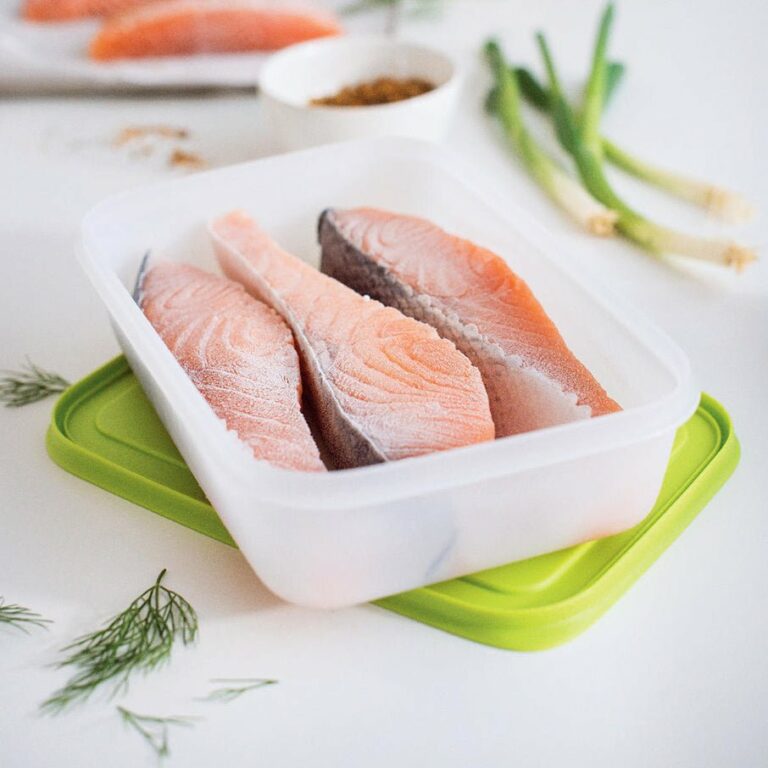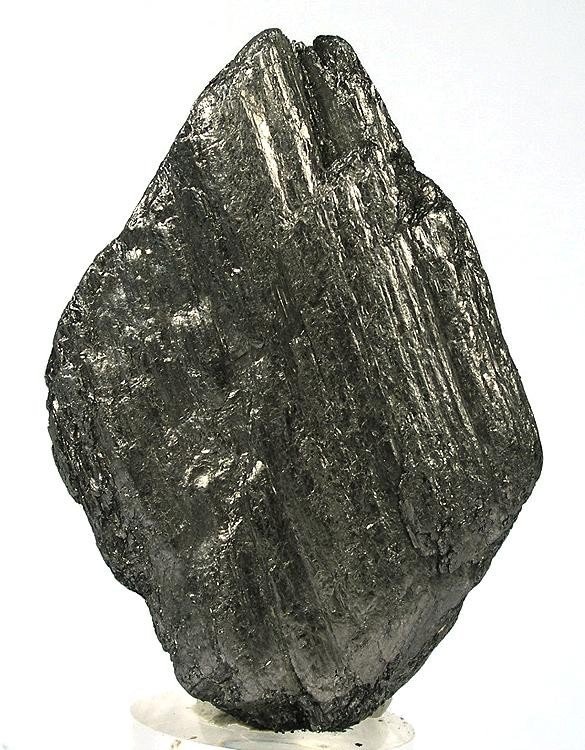Prevent Freezer Burn: Expert Tips On How To Freeze Meat
Today we discuss How to Freeze Meat to Avoid Freezer Burn. Don’t worry, we’ve got you covered! In this article, we will show you exactly how to freeze meat to avoid freezer burn. By following these simple steps, you can ensure that your meat stays fresh, flavorful, and free from any icy damage. Say goodbye to wasted meat and hello to perfectly preserved cuts every time. Let’s dive right in and learn the best techniques for keeping your meat freezer burn-free.
How to Freeze Meat to Avoid Freezer Burn
Freezer burn can ruin the quality and taste of your frozen meat. It occurs when the meat is exposed to air and moisture, leading to dehydration and oxidation. Fortunately, there are several steps you can take to properly freeze meat and prevent freezer burn. In this comprehensive guide, we will walk you through the process of freezing meat, from preparation to storage. By following these tips, you can ensure your meat stays fresh and flavorful for an extended period of time.
Choosing the Right Cuts of Meat:
Before freezing meat, it’s important to select the right cuts. Some meats freeze better than others, so consider the following factors:
Fat Content
Meats with higher fat content tend to freeze better as the fat helps retain moisture. Fattier cuts like ribeye steak or chicken thighs are great options for freezing.
Packaging
Individual portions are ideal for freezing, as they allow for easy defrosting. Consider dividing larger cuts into smaller portions before freezing.
Freshness
Freezing meat at its freshest ensures better quality once thawed. Avoid freezing meat that is nearing its expiration date or has been previously thawed.
Properly Packaging Meat for Freezing:
Proper packaging is essential to prevent freezer burn. Follow these steps to ensure your meat stays fresh and protected:
Wrap in Plastic Wrap or Freezer Bags
Wrap individual portions of meat tightly in plastic wrap or place them in freezer bags. Be sure to remove as much air as possible before sealing.
Double Wrapping
For added protection, consider using a second layer of packaging. Wrap the plastic-wrapped meat with aluminum foil or place the freezer bag inside a larger resealable bag.
Vacuum Sealing
Investing in a vacuum sealer can significantly extend the shelf life of your frozen meat. Vacuum-sealed packages create an airtight seal, preventing moisture loss and freezer burn.
Preparing Meat for Freezing:
Properly preparing the meat before freezing can make a big difference in maintaining its quality. Follow these steps for optimal results:
Trim Excess Fat
Remove any excess fat from the meat before freezing. Fat can spoil faster than the rest of the meat, leading to off-flavors and decreased quality.
Seasoning
If desired, season the meat before freezing. However, avoid using excessive salt, as it can draw out moisture and affect the texture of the meat.
Labeling
Always label the packages with the date of freezing to keep track of freshness. Additionally, write down the type of meat and any special seasonings or marinades used.
Freezing Techniques:
To maintain the quality and flavor of your meat, employ the following freezing techniques:
Quick Freezing
Quick freezing minimizes the formation of large ice crystals, which can damage the meat’s texture. Set your freezer to the coldest possible temperature or use the quick freeze feature if available.
Spacing
Ensure there is adequate space between packages to allow for proper air circulation. This helps maintain a consistent temperature and prevents the buildup of ice crystals.
Freezer Organization
Keep your freezer organized to easily locate specific cuts of meat. Place the newest packages at the back and older ones at the front for a rotation system.
Thawing Meat:
Proper thawing is crucial to preserving the quality and safety of frozen meat. Follow these guidelines:
Refrigerator Thawing
The safest method for thawing meat is to transfer it from the freezer to the refrigerator. Allow enough time for the meat to thaw slowly and evenly. This method usually takes 24 to 48 hours depending on the size of the cut.
Cold Water Thawing
If you need to thaw meat quickly, place it in a leak-proof plastic bag and submerge it in cold water. Change the water every 30 minutes to ensure it remains cold. This method typically takes 1 to 3 hours.
Microwave Thawing
Microwave thawing is the fastest method, but it can partially cook the meat and affect its texture. Follow the manufacturer’s instructions for defrosting meat using a microwave.
Proper Storage of Thawed Meat:
Once your meat is thawed, it’s essential to store it properly to maintain its quality and prevent bacterial growth. Follow these guidelines:
Refrigerator Storage
If you don’t plan to use the thawed meat immediately, store it in the refrigerator for up to two days. Place the meat in a covered container to prevent cross-contamination.
Freezer Storage
If you need to refreeze the thawed meat, cook it first before freezing. Freezing cooked meat is generally safe, but its texture may slightly change.
Tips to Prevent Freezer Burn:
In addition to the techniques mentioned above, here are some additional tips to prevent freezer burn:
Use High-Quality Freezer Bags
Invest in high-quality freezer bags that are specifically designed for long-term storage. These bags provide an extra layer of protection against air and moisture.
Remove Excess Air
When packaging meat, remove as much air as possible to minimize the chance of freezer burn. Press the air out of the bags or use a vacuum sealer for optimal results.
Avoid Temperature Fluctuations
Maintaining a consistent freezer temperature is crucial. Avoid opening the freezer unnecessarily or placing hot items inside, as this can cause temperature fluctuations and increase the risk of freezer burn.
Frequently Asked Questions (FAQs)
Now that we have covered the main topic of how to freeze meat to avoid freezer burn, let’s address some commonly asked questions:
8.1 Can you refreeze meat after thawing?
It is generally safe to refreeze meat after thawing, but the quality may be slightly compromised. Cooked meat can be refrozen with minimal changes in texture.
8.2 How long can meat stay in the freezer?
Properly stored meat can stay in the freezer for several months to a year. However, for optimal quality, it is recommended to consume frozen meat within three to six months.
8.3 Can you freeze meat in its original packaging?
While it is technically possible to freeze meat in its original packaging, it is not recommended. The original packaging is not designed for long-term freezer storage and may not provide adequate protection against freezer burn.
In conclusion, properly freezing meat is essential to avoid freezer burn and maintain its quality. By selecting the right cuts, packaging them correctly, and following best practices for freezing and thawing, you can enjoy flavorful, tender meat even after months of freezing. Remember to practice good freezer organization and store thawed meat properly to prevent bacterial growth. By following these tips, you can ensure your frozen meat remains delicious and safe to consume.
How to wrap any meat to last forever and prevent freezer burn!
Frequently Asked Questions
How should I freeze meat to avoid freezer burn?
When freezing meat to prevent freezer burn, start by wrapping it tightly in plastic wrap or aluminum foil to minimize air exposure. Then, place the wrapped meat in a resealable freezer bag or airtight container, removing as much air as possible before sealing. Label the package with the date and type of meat for easy identification. Store the meat in the coldest part of the freezer, away from the door. It is also advisable to minimize temperature fluctuations by not overloading the freezer or leaving the door open for extended periods. Following these steps will help protect your meat from freezer burn and preserve its quality for an extended period.
Can I freeze meat directly in its original packaging?
While it is possible to freeze meat in its original packaging, it is generally not recommended. The thin plastic packaging used by grocery stores may not provide adequate protection against freezer burn. It is best to transfer the meat into airtight packaging or wrap it more securely before freezing. This will help maintain the quality of the meat and prevent freezer burn.
Should I remove excess air from freezer bags before sealing them?
Yes, it is crucial to remove as much air as possible from freezer bags before sealing them. Excess air can cause freezer burn by promoting the formation of ice crystals on the meat’s surface. To remove air, gently press the bag, starting from the bottom and moving upward, allowing the air to escape through the top. Alternatively, you can use a vacuum sealer to eliminate the air entirely. Properly sealed and air-free freezer bags help maintain the meat’s quality and prevent freezer burn.
Can I reuse freezer bags for meat?
It is generally safe to reuse freezer bags for meat as long as they are thoroughly cleaned and in good condition. After using a freezer bag, wash it with hot, soapy water, rinse it well, and let it air dry before reusing. Inspect the bag for any signs of wear or damage, such as tears or holes, and discard it if needed. Using clean and intact freezer bags for meat storage helps maintain hygiene and reduces the risk of freezer burn.
Is it necessary to wrap meat tightly before freezing?
Yes, it is essential to wrap meat tightly before freezing to minimize air exposure and prevent freezer burn. Use plastic wrap, aluminum foil, or freezer paper to tightly enclose the meat, ensuring no air pockets. Secure the wrapping properly to maintain the meat’s freshness and prevent moisture loss, which contributes to freezer burn. Wrapping the meat tightly also helps protect it from potential contaminants in the freezer and maintains its quality during storage.
What is the ideal temperature for freezing meat?
The ideal temperature for freezing meat is below 0°F (-18°C). At this temperature, the meat’s enzymes and bacteria are in a dormant state, preventing spoilage. It is important to set your freezer at the proper temperature and regularly monitor it using a freezer thermometer to ensure it stays consistently cold. Maintaining the recommended freezing temperature is crucial for preventing freezer burn and keeping your meat safe for consumption.
Final Thoughts
To freeze meat and prevent freezer burn, follow these simple steps. First, ensure the meat is fresh and properly packaged to maintain its quality. Next, wrap the meat tightly in airtight packaging or freezer bags, removing any excess air. Label and date the packages for easy identification. Finally, store the meat in the coldest part of the freezer, away from any potential sources of heat. By following these guidelines on how to freeze meat to avoid freezer burn, you can preserve the taste and texture of your meat for longer periods of time.



